
The Christian Church (Disciples of Christ) is a mainline Protestant Christian denomination in the United States and Canada. The denomination started with the Restoration Movement during the Second Great Awakening, first existing during the 19th century as a loose association of churches working towards Christian unity, then slowly forming quasi-denominational structures through missionary societies, regional associations, and an international convention. In 1968, the Disciples of Christ officially adopted a denominational structure at which time a group of churches left to remain nondenominational.

Ecumenism, also spelled oecumenism, is the concept and principle that Christians who belong to different Christian denominations should work together to develop closer relationships among their churches and promote Christian unity. The adjective ecumenical is thus applied to any interdenominational initiative that encourages greater cooperation and union among Christian denominations and churches.

The Restoration Movement is a Christian movement that began on the United States frontier during the Second Great Awakening (1790–1840) of the early 19th century. The pioneers of this movement were seeking to reform the church from within and sought "the unification of all Christians in a single body patterned after the church of the New Testament."
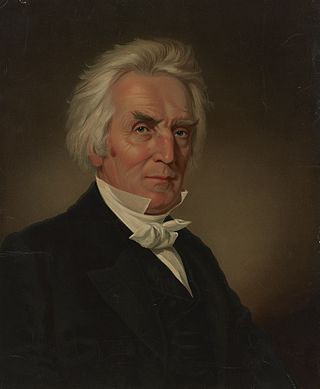
Alexander Campbell was a Scots-Irish immigrant who became an ordained minister in the United States and joined his father Thomas Campbell as a leader of a reform effort that is historically known as the Restoration Movement, and by some as the "Stone-Campbell Movement." It resulted in the development of non-denominational Christian churches, which stressed reliance on scripture and few essentials. Campbell was influenced by similar efforts in Scotland, in particular, by James and Robert Haldane, who emphasized their interpretation of Christianity as found in the New Testament. In 1832, the group of reformers led by the Campbells merged with a similar movement that began under the leadership of Barton W. Stone in Kentucky. Their congregations identified as Disciples of Christ or Christian churches.
Nondenominational Christianity consists of churches which typically distance themselves from the confessionalism or creedalism of other Christian communities by not formally aligning with a specific Christian denomination. Many non-denominational churches have a congregationalist polity, which is self-governing without a higher church authority.
The Churches of Christ, most commonly known as the Church of Christ or church of Christ, is a loose association of autonomous Christian congregations based on the sola scriptura doctrine. Their practices are based on Bible texts and draw on the early Christian church as described in the New Testament.
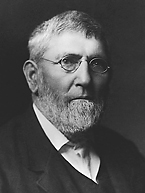
David Lipscomb was a minister, editor, and educator in the American Restoration Movement and one of the leaders of that movement, which, by 1906, had formalized a division into the Church of Christ and the Christian Church. James A. Harding and David Lipscomb founded the Nashville Bible School, now known as Lipscomb University in honor of the latter.
The Churches of Christ in Australia is a Reformed Restorationist denomination. It is affiliated with the Disciples Ecumenical Consultative Council and the World Communion of Reformed Churches.
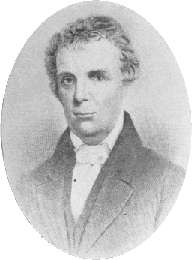
Barton Warren Stone was an American evangelist during the early 19th-century Second Great Awakening in the United States. First ordained a Presbyterian minister, he and four other ministers of the Washington Presbytery resigned after arguments about doctrine and enforcement of policy by the Kentucky Synod. This was in 1803, after Stone had helped lead the mammoth Cane Ridge Revival, a several-day communion season attended by nearly 20,000 persons.

The World Methodist Council (WMC), founded in 1881, is a consultative body and association of churches in the Methodist tradition. It comprises 80 member denominations in 138 countries which together represent an estimated 80 million people; this includes approximately 60 million committed members and a further 20 million adherents. It is the fifth-largest Christian communion after the Roman Catholic Church, Eastern Orthodox Church, Anglican Communion, and World Communion of Reformed Churches.
The Christian Connection was a Christian movement in the United States of America that developed in several places during the late 18th and early 19th centuries, composed of members who withdrew from other Christian denominations. It was influenced by settling the frontier as well as the formation of the new United States and its separation from Great Britain. The Christian Connection professed no creed, instead relying strictly on the Bible.
Jesse Moren Bader (1886–1963) was a 20th-century evangelist, ecumenist and global leader. He was a significant and visionary leader during the twentieth century, not only within his own communion, helping establish the World Convention of Churches of Christ but also within the wider church. This influence was not limited to the United States of America but extended to the Christian world.
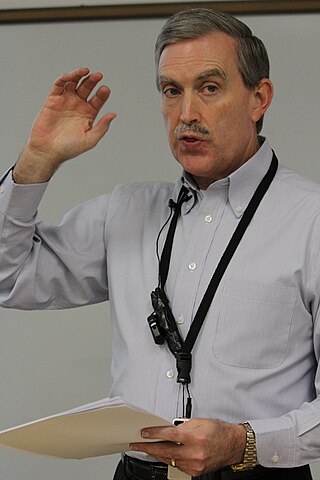
Douglas A. Foster is author and scholar known for his work on the history of Stone-Campbell Restoration Movement.
The Lausanne Committee for World Evangelization, more commonly known as the Lausanne Movement, is a global movement that mobilizes Christian leaders to collaborate for world evangelization. The movement's fourfold vision is to see 'the gospel for every person, disciple-making churches for every people and place, Christ-like leaders for every church and sector, and kingdom impact in every sphere of society'.

The United Church of Christ in the Philippines is a Christian denomination in the Philippines. Established in its present form in Malate, Manila, it resulted from the merger of the Evangelical Church of the Philippines, the Philippine Methodist Church, the Disciples of Christ, the United Evangelical Church and several independent congregations.
World Communion Sunday is a celebration observed by several Christian denominations, taking place on the first Sunday of every October, that promotes Christian unity and ecumenical cooperation. It focuses on an observance of the eucharist. The tradition was begun in 1933 by Hugh Thomson Kerr who ministered in the Shadyside Presbyterian Church. According to Presbyterian Outlook:
Davitt S. Bell recalled that Dr. Kerr first conceived the notion of World Communion Sunday during his year as moderator of the General Assembly (1930). Dr. Kerr's younger son, the Rev. Dr. Donald Craig Kerr, who is pastor emeritus of the Roland Park Presbyterian Church in Baltimore, was sixteen in 1933. He has related that World Communion Sunday grew out of the Division of Stewardship at Shadyside. It was their attempt to bring churches together in a service of Christian unity—in which everyone might receive both inspiration and information, and above all, to know how important the Church of Jesus Christ is, and how each congregation is interconnected one with another.
The Christian Association of Washington was an organization established by Thomas Campbell in 1809 to promote Christian unity. It was a study group that Campbell formed with like minded friends and acquaintances in the local neighborhood of Washington, Pennsylvania. The group sought to foster unity by focusing on a common form of Christianity that they could all agree upon. This charter that Campbell wrote for this group, the Declaration and Address of the Christian Association of Washington, became one of the most important early texts of the Restoration Movement.
William Robinson (1886–1963) was a British theologian within the Stone-Campbell movement. He received his Masters of Arts from Trinity College, Dublin and was a professor at Selly Oaks College. Robinson advocated many of the ecumenical implications of the work of Thomas Campbell's Declaration and Address in his works such as What the Churches of Christ Stand For and his Essays on Christian Unity. He was an active member of various ecumenical efforts in the middle of the 20th century such as the Faith and Order Movement and the World Council of Churches. He rejected the idea that the New Testament has an ahistorical law code for the church to replicate and placed greater importance on the development of the church through history as an essential part of organic unity of the church. He held to a sacramental view of Baptism and the Eucharist (communion), rejecting the Zwinglian views held by some earlier preachers and theologians in the movement. Robinson believed that unity was not simply organization coherence, but a connection to the singular people of God through the history of the church. Because Robinson believed that this unity meant a connection to the historical church and because of his sacramental views on the church and Christian worship, Robinson is seen as a theologian that represents the free church/high church position, or what many have called "free church catholicism." His book, The Biblical Doctrine of the Church, articulates his ecclesiology and his understanding of Christian unity. He writes from within the framework purposed by Thomas Campbell, but with an increased emphasis on the church as the embodied work of God in history.
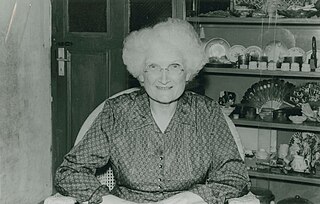
Elizabeth Bernard was an American missionary for the Churches of Christ, known for her missionary work with blind children in Asia.









